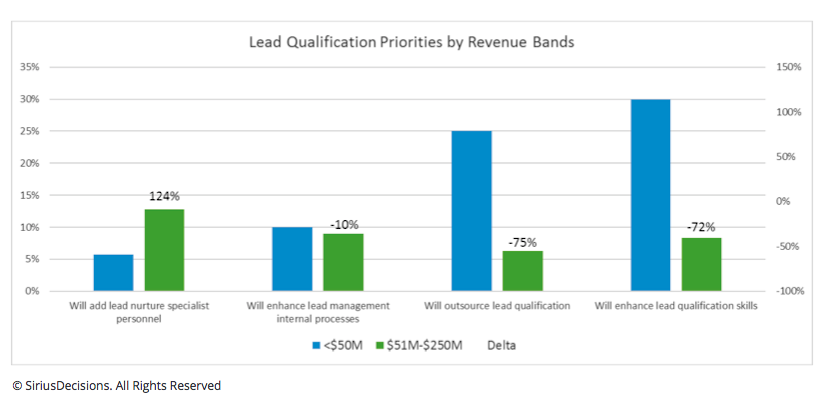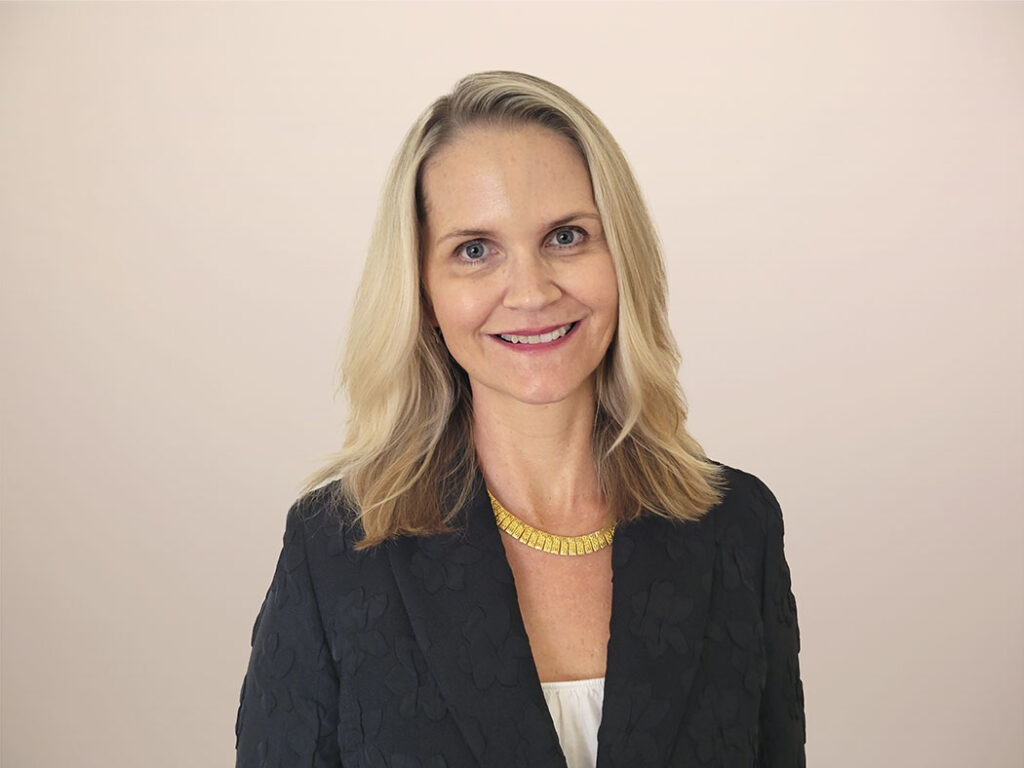By the Numbers: Lead Qualification at Emerging Companies
- Data shows that 35 percent of CMOs at emerging companies are challenged with generating high-quality leads
- Companies typically transition lead qualification from an outsourced to an insourced activity when they reach between $51 million and $250 million in revenue
- At under$50 million in revenue, lead qualification is usually adopted and between $51 million and $250 million is when it is operationalized
Given the multitude of incredibly smart B2B marketers and companies competing to provide B2B products and services designed to generate qualified leads, you would think that Wikipedia would have a definition for lead qualification. Instead, a quick search reveals that Wikipedia does not have an article with that exact name. Instead, it tells the user to search for “lead qualification” and check for alternative spellings.
We now know from the SiriusDecisions 2016 CMO Study that the number-one priority that influences the marketing strategy at companies under $50 million is adapting to changing economic conditions. The survey further reveals that the biggest challenge CMOs at emerging companies face when adapting to changing economic conditions is generating high-quality leads. In fact, 35 percent of CMOs at emerging companies responded as being challenged with generating high-quality leads. The challenge of high-quality lead generation surpasses the challenges of dealing with reduced budgets and prioritizing growth opportunities.
Taking a deeper look at the lead qualification data and comparing survey responses from companies under $50 million to companies in the next higher revenue band ($51 million to $250 million), we see that companies under $50 million are 124 percent less likely to add personnel that are specialists in lead qualification and nurturing. However, they are 10 percent more likely to enhance internal processes around lead management and service-level agreements (SLAs) and 72 percent more likely to enhance lead qualification skills. Couple those data points with the fact that companies under $50 million are 75 percent more likely to outsource lead qualification than companies between $51 million and $250 million and the story becomes clear.
What story is the data telling us? Companies that are under $50 million absolutely realize the importance of lead qualification and nurturing, but are not quite ready/willing/able to hire specialists to support and enhance the required processes. Adopting lead qualification then becomes only one part of an emerging company employee’s job responsibility. Considering the willingness to invest in outsourcing lead qualification, one could surmise that emerging company decisionmakers have prior experience at larger companies where lead qualification was impactful to the business. Outsourcing lead qualification requires modifications to internal processes, which is why companies under $50 million will invest time in formalizing the lead handoff processes. There is also a willingness to invest in enhancing skills necessary to manage the external lead qualification providers.
Between $51 million to $250 million in revenue is an inflection point – companies bring lead qualification back in-house. Crossing that next revenue threshold allows for companies to improve the lead qualification processes and skills adopted at the under-$50 million stage. The additional resources and availability of lead qualification specialists for companies $51 million to $250 million in revenue facilitates the shift from adoption to operationalization of lead qualification.
Based on the findings in the data, there are a few things emerging companies should do to improve lead qualification as they prepare for their next growth inflection point. The most critical and often neglected first step is to continually align sales and marketing on the definition of a lead. Proper implementation, measurement and governance of SLAs will improve the lead qualification process, as well as lead scoring and sales enablement. In addition, the agency transition strategy needs to be determined for when lead qualification specialists (not generalists) can be insourced so that lead qualification tools aren’t underutilized because a particular skillset is lacking. The ultimate aspiration for companies under $50 million companies to fully prepare for the next growth inflection point is to start with the fundamental building blocks of high-performance lead development and ensure that best practices are carefully documented to prepare for the transition to insourcing lead qualification. In addition, it is highly recommended that these organizations implement the SiriusDecisions Eight-Factor Model, which provides a step-by-step process for sustainable lead development effectiveness.
